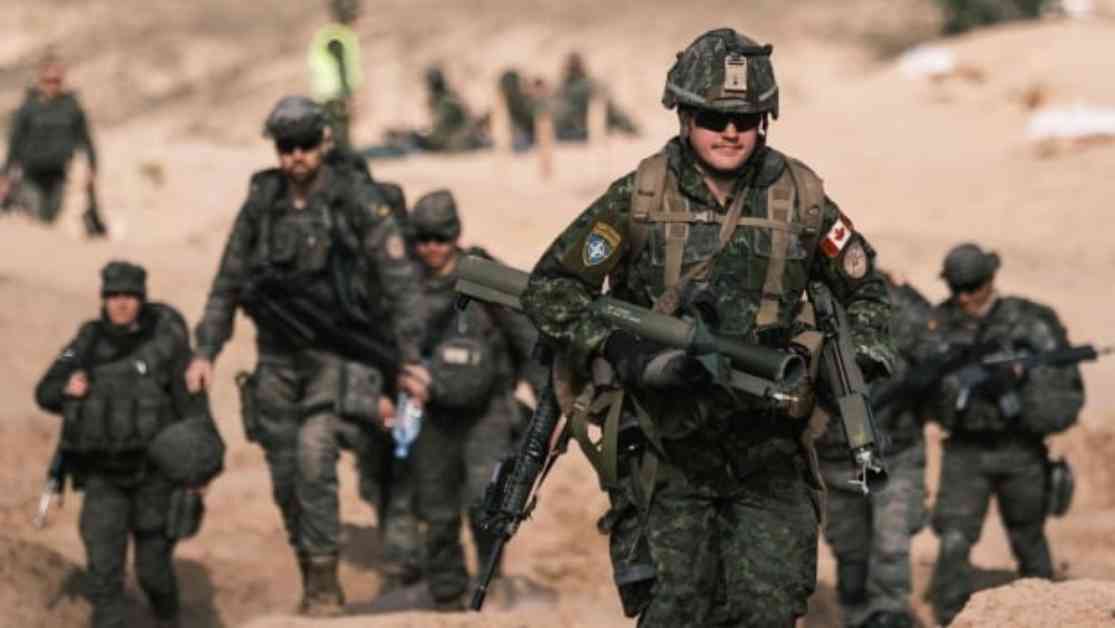The recent budget cuts within the Department of National Defence (DND) have left the army’s equipment maintenance and vehicle preservation system facing a staggering shortfall of up to $150 million. This revelation, uncovered by CBC News, has raised concerns about the readiness and operational capabilities of the Canadian Armed Forces.
Impact of Budget Cuts on Army Equipment Maintenance
The budget cuts have had a significant impact on the army’s ability to maintain its equipment and vehicles, with almost half of the army’s equipment now deemed unserviceable. Lt-Col. Sandra Lévesque revealed that as of June 10, 2024, only 52% of the army’s operational fleets were deemed serviceable. This represents a slight deterioration from the previous year, where 46% of the army’s gear was considered unserviceable.
The funding gap further widens when factoring in the preservation of older systems, which may need to be utilized in emergencies. The army acknowledged that the shortfall in national procurement funding amounts to $260 million, in addition to the $150 million needed for current maintenance and upkeep. This deficit poses a serious threat to the army’s ability to respond to crisis calls from NATO or domestic emergencies like wildfires in Western Canada.
Challenges in Maintaining Operational Readiness
The shortage of maintenance funding is not only affecting the army’s ability to maintain its equipment but also impacting its overall operational readiness. The army is facing a dilemma where it must prioritize its limited resources between sustaining troops deployed in NATO missions and preparing for potential domestic emergencies.
Defence Minister Bill Blair has reassured that the budget cuts will not compromise the military’s operational capabilities. However, retired lieutenant-general Andrew Leslie has criticized the disconnect between the minister’s promises and the current state of the army. Leslie emphasized that the Armed Forces lack the necessary resources to fulfill their duties effectively, raising concerns about their preparedness for future challenges.
Budget Allocation and Spending Priorities
The Department of National Defence has allocated $586 million for overall maintenance and upkeep this year. Despite this budget, there remains a significant shortfall in funding, which is impacting the serviceability of Canadian Army fleets. The government’s decision to cut internal spending by $810 million in the current fiscal year and by $908 million annually from 2026 onwards has further strained the army’s resources.
The military is receiving additional funding for the purchase of new equipment, but it is struggling to balance this influx of cash with the need to make cuts elsewhere in its budget. The lack of clarity on where and how these cuts will be implemented has raised concerns about the long-term sustainability of the Canadian Armed Forces.
Challenges in Domestic Emergency Response
The budget shortfall is likely to have a disproportionate effect on the army’s capacity to respond to domestic emergencies such as floods or fires. The prioritization of sustaining troops deployed in NATO missions has left the army with limited resources to address lower-priority missions within Canada. Skimping on maintenance and upkeep could have severe consequences for the army’s operational readiness, jeopardizing its ability to effectively respond to crises at home.
The government’s decision to increase pressure on allies to spend more on defence has added to the challenges faced by the Canadian military. With escalating tensions in Europe and the ongoing conflict between Russia and Ukraine, there is a growing need for Canada to maintain high readiness and support NATO forces in the region. However, the budget constraints and internal spending cuts are hindering the army’s preparedness for potential international conflicts.
Mitigating the Impact of Budget Cuts
To address the budget shortfall and ensure the army’s operational readiness, it is crucial for the government to reassess its funding priorities and allocate resources effectively. Retired lieutenant-general Andrew Leslie has emphasized the importance of investing in essential training facilities, national procurement, and industry partnerships to enhance the army’s capabilities.
The renewal of critical contracts like the Weapon Effects Simulation Modernization (WESM) project is essential to maintaining the army’s training and readiness levels. Delaying or cutting back on such contracts could have far-reaching consequences for the army’s ability to train effectively and respond to emergencies.
Moving forward, it is imperative for the government to prioritize the needs of the Canadian Armed Forces and address the funding gaps that are undermining its operational capabilities. By investing in maintenance, training, and equipment modernization, Canada can ensure that its military remains prepared to face evolving threats and challenges on both domestic and international fronts.
In conclusion, the budget cuts within the Department of National Defence have created significant challenges for the Canadian Armed Forces, particularly in maintaining equipment and vehicle readiness. The shortfall in maintenance funding has raised concerns about the army’s ability to respond to emergencies and fulfill its operational duties effectively. It is essential for the government to prioritize the military’s needs and address the funding gaps to ensure the continued readiness and effectiveness of the Canadian Armed Forces.
